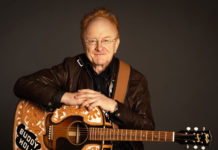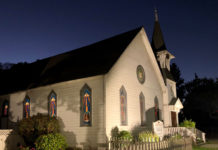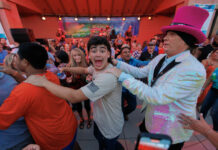If any city symbolizes the human story of the struggle for
freedom, it’s Berlin. I have a family connection with that great
German metropolis. My mother was born a Berliner. As a young girl
in the 1930s, she witnessed how the rise of Adolph Hitler’s fascism
brought the fall of individual liberties.
If any city symbolizes the human story of the struggle for freedom, it’s Berlin. I have a family connection with that great German metropolis. My mother was born a Berliner. As a young girl in the 1930s, she witnessed how the rise of Adolph Hitler’s fascism brought the fall of individual liberties. Thirty years later, she saw how the rise of the infamous Berlin Wall divided the people of her city between the freedom of the capitalist west sector and the captivity of the communist east sector.
In 1977 when I was 10 years old, mom took me to Germany for a tour of her homeland. We spent much of the trip in West Berlin where we stayed at my grandmother’s apartment. Among my memories is a daytrip to East Berlin. We traveled there by subway train, crossing the wall’s border and passing through a canyon of abandoned apartment buildings to reach the Berlin Friedrichstrasse Railroad Station at the core of the Soviet sector. It took an hour or so to drudge our way through the maze of a border checkpoint located in a grey-spirited station chamber. East German guards carrying heavy-duty firepower stood menacingly at attention as mom and I slowly shuffled our way down the long queue to the drab bureaucrats at the processing counter.
Once we left the station and started strolling through East Berlin, I saw the vivid difference between a people living in freedom and those dwelling in tyranny. In West Berlin, I’d witnessed a joyous energy of citizens moving about their lives in liberal freedom. West Berlin’s soul pulsated with a noisy, hearty, cheerful exuberance. In East Berlin, I saw a city soul trapped in a state-run prison. The eyes of the East Berliners looked tinged with a deep sadness, a hopelessness, a despair. The people on this side of the wall marched along the sidewalks in silence only accented by the clip-clopping of their shoes treading the cement. These people were living in a kind of Orwellian hell of strident socialism. When they were in public, they would be wise not to speak out loud. Some eavesdropping informant might overhear and tell the secret police. Most vividly, I remember a stench of sulfur permeating the air. Years later, someone told me this smell came from the low quality of coal burned in East Berlin.
During our daytrip to East Berlin, my mom took me to several of the cultural centers on the city’s Museum Island. I particularly enjoyed the ancient Near East artifacts at the Pergamom Museum, including the reconstruction of King Nebuchadnezzar II’s ornate Ishtar Gate that was once a checkpoint along the wall that rung the inner city of Babylon. Even 2,500 years ago, cities divided their populace with walls.
The trip was highlighted with a visit to an East Berlin couple my mom knew. Their apartment was tiny but clean and cheerful. They served us a nicely prepared but plain dinner. As it got late, they guided mom and me back to the Friedrichstrasse Station. The front entrance building was called Tränenpalast, “The Palace of Tears,” the border where East Berlins could not go beyond. This was where friends and families said their goodbyes, knowing their lives would once again be divided by an ugly wall.
Saturday marks the 50th anniversary of the start of construction of the Berlin Wall. As the concrete barrier rose, the wall became a metaphor for the Cold War clash between communism and capitalism. The wall also served to symbolize the human hunger for liberty. Many Berlins risked their lives – and many died – trying to cross the boundary to reach freedom.
Today, the wall provides us with a lesson of hope. President Ronald Reagan and President Mikhail Gorbachev decided to let go of their ideologies and work together to bring about democratic freedom with the fall of the wall. Both men had to go up against the ideologies of their own political parties to accomplish their miracle. On Nov. 9, 1989, the miracle happened.
The United States is now constructing a wall that is dividing the people of our nation. Our wall is not one built of concrete and rebar. Our wall is being built of uncompromising ideology and political dogma. We’re seeing this wall’s construction in the halls and chambers of our nation’s capitol city. It’s an ugly wall built by politicians and pundits using the bricks and mortar of hateful and vitriolic words.
On this weekend’s anniversary marking the Berlin Wall’s construction start, let us remember the miracle that happened 28 years later. A wall can fall.







